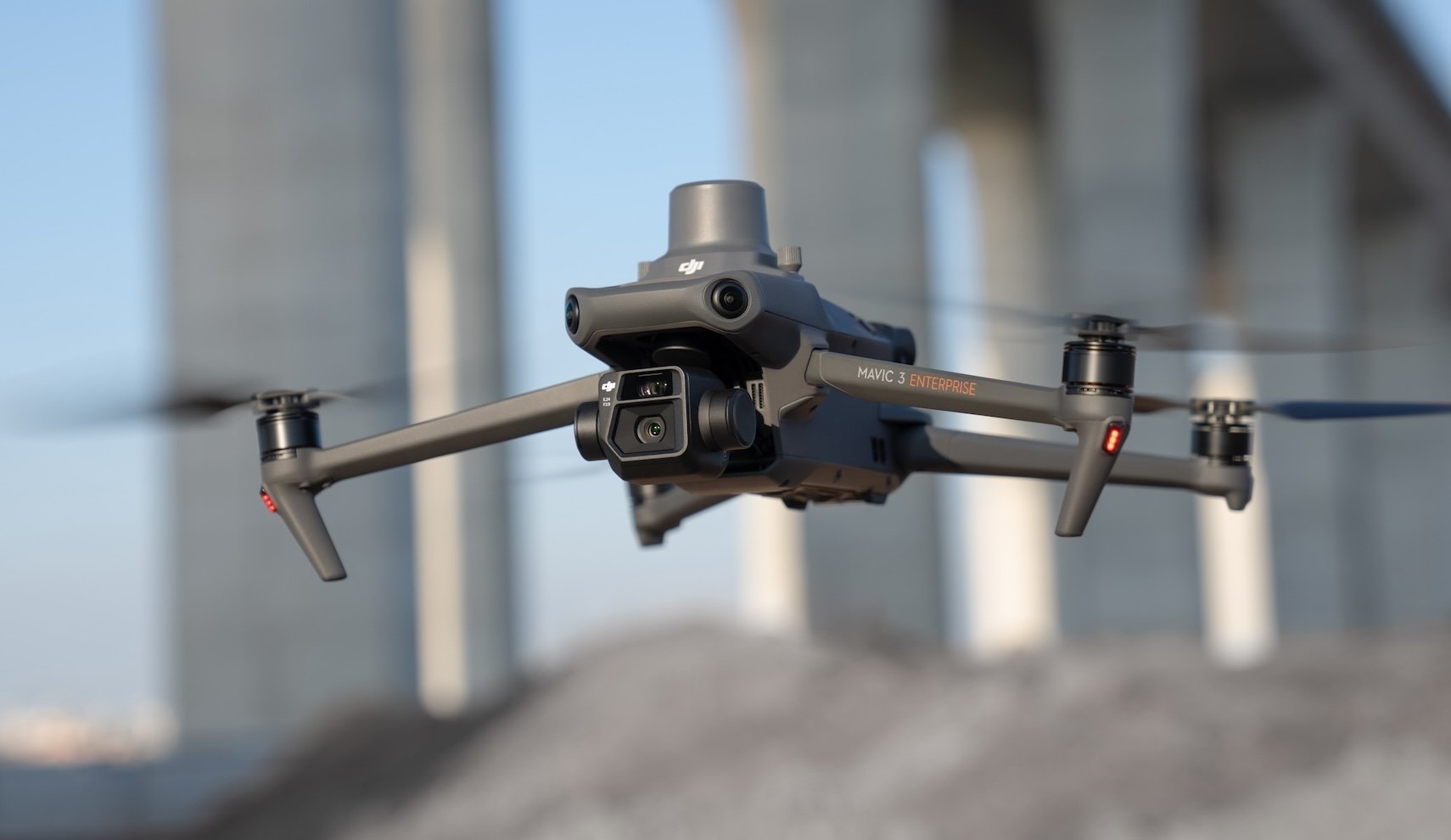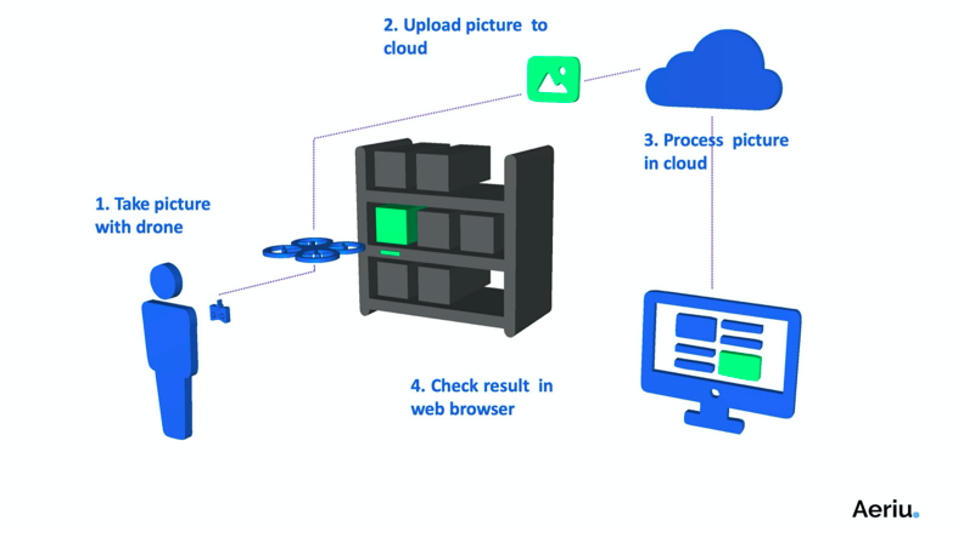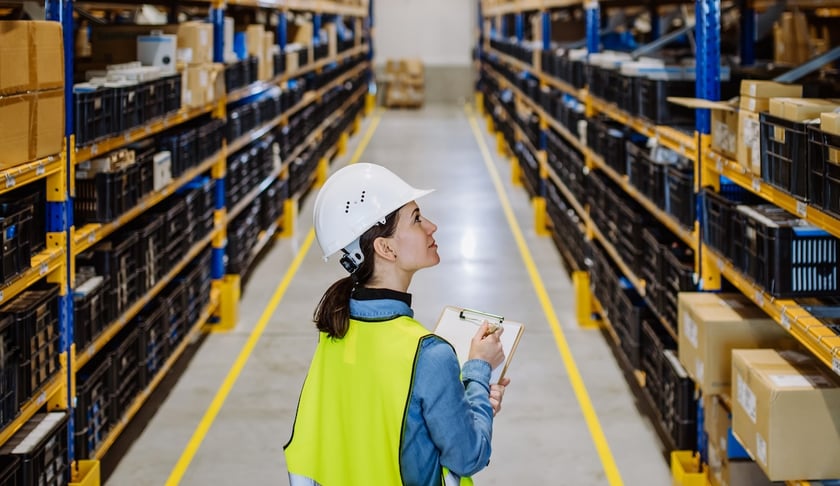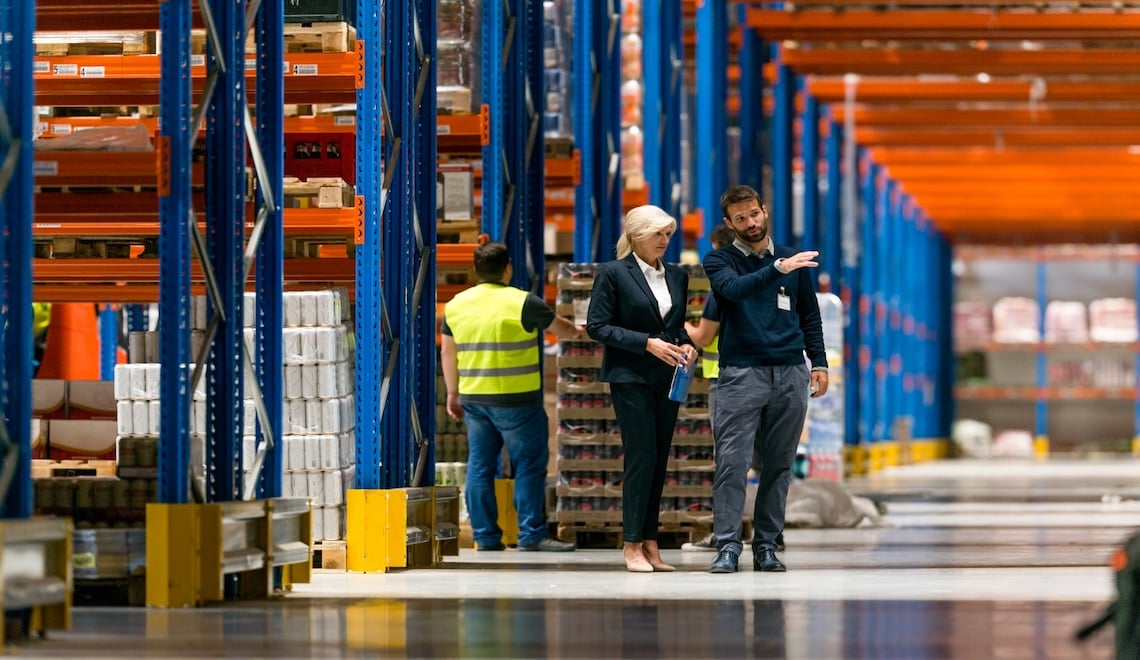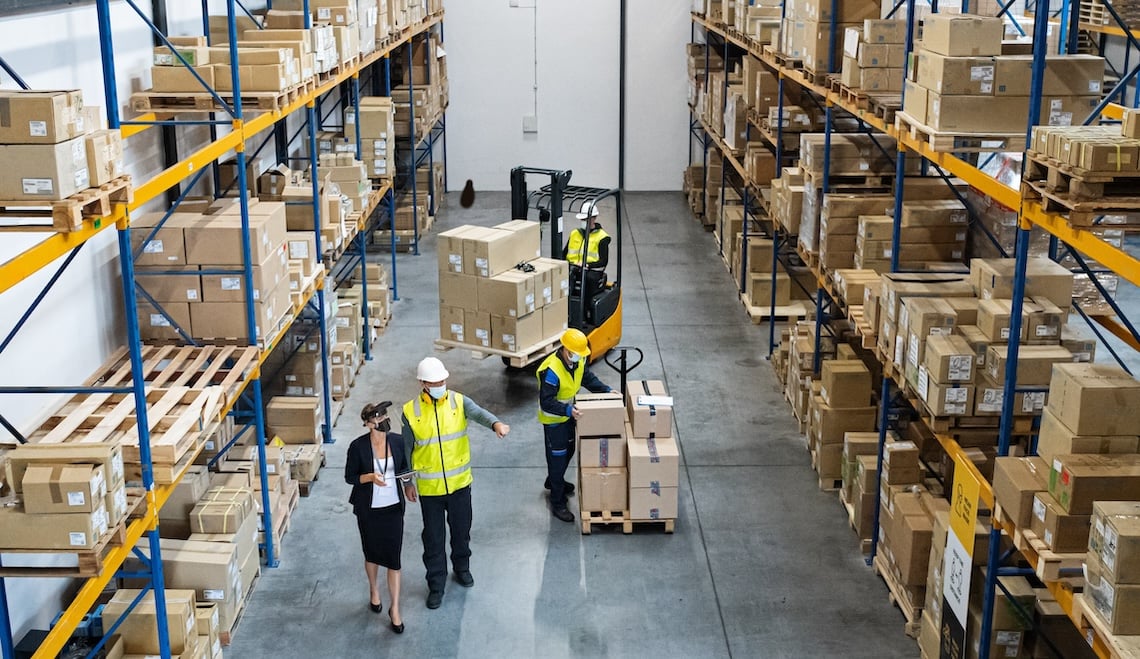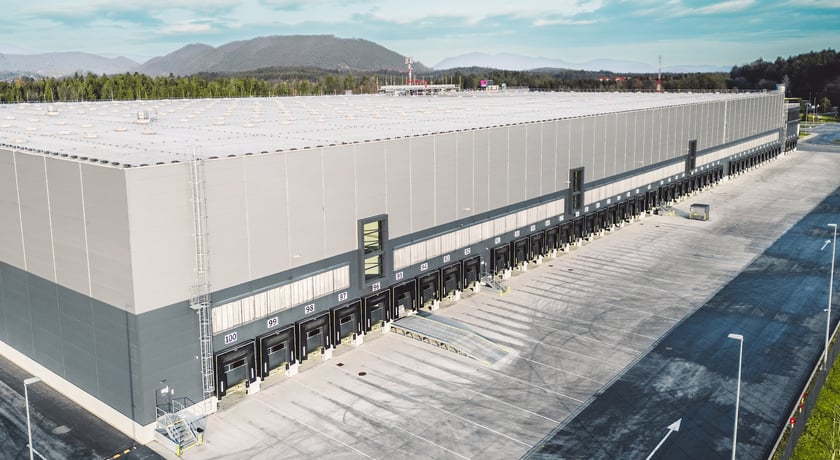That pallet rack is really high up. But you’ve been tasked with taking inventory for the warehouse — something you’re glad you don’t have to do often. You step onto the forklift, reach the right shelf, try not to look down and take note of all the items there. You move your life-saving bucket along the shelf until you’ve written down everything it contains. It’s a slow and tedious process, and the whole time all you can think about is that you know there are better uses of your talents elsewhere in the building.
You don’t like it any more than your bosses do, but someone has to take inventory at least once every three months.
You make your way back down. Now you have to do the exact same thing hundreds of times until you’re done.
That’s what taking inventory has traditionally been like for many warehouses. And yet, it doesn’t have to be. Either a human being can do it… or a drone can.
What are Warehouse Drones?
Drones can be designed to perform complex tasks in warehouses, such as inventory management, security, and delivery of tools and parts. These automated drones specifically designed to operate in warehouses are called warehouse drones.
Warehouse drones excel at automatically performing inventory-related tasks because of their ability to count and record stock using a barcode scanner. A drone can fly around and scan items, which is then compared to the inventory data in the warehouse management system. New records are added, old ones are deleted, and a new inventory list is created.
Companies like Aeriu understand the need for warehouse drones and are busy making them a reality.
How Warehouse Drones Work
Warehouse drones use a combination of machine learning, video processing, robotics, cloud connectivity, and artificial intelligence. These technologies combine to create a drone system specifically for warehouses.
A warehouse drone is equipped with sensors that can scan inventory, such as in the context of barcode warehousing. The warehouse management system feeds information into the drone’s memory so that when it comes across a bar code (or QR code or some other type of identifier), it instantly recognizes the item it’s looking at.
A warehouse drone avoids collisions because it’s equipped with a map of the warehouse. The drone software then designs a path through it, ensuring maximum efficiency while avoiding crashes.
How are drones used in warehouses?
The process of using drones for inventory management typically involves the following steps:
- A drone’s sensors collect and analyze digital images of the warehouse’s items.
- The drone sends the analysis to the warehouse management system.
- The warehouse management system makes a comparison between the drone’s analysis and its own data.
- The new record is reflected in the inventory if there’s a difference
What Systems Does a Drone Need?
Warehouse drones all contain certain features that prevent issues and keep them working safely. For example:
Obstacle Sensing Systems: This enables a warehouse drone to fly without experiencing a collision. A drone needs to be able to detect obstacles with its sensors and take the appropriate action to avoid them.
On-Board Processing Power: If the network connection becomes unstable, the drone needs a secondary system in the form of powerful onboard processing. This way, it can continue to work even if it doesn’t have a connection to the warehouse management system.
Smart Interface: Any data the drone collects goes to an inventory management system, requiring a smart interface. Data is not stored on the drone or in the software.
Camera System: A drone needs a proper camera system to do its job. It has to see and identify aisles, racks, lanes and inventory reliably to orient itself.
Cloud Drive: Data collected by the drone must be uploaded to a cloud drive.
Analytics Report: After the drone collects and uploads its data, the system can turn it into an insight report. That report can be integrated with the inventory management system or sent directly to the inventory manager.
What can warehouse drones do?
So far, we’ve mostly been discussing inventory management, but warehouse drones have many uses, including:
1. Inspections
Drones are suitable for conducting warehouse inspections to check for damage or areas that need repair. They use their high-powered cameras to take photos of equipment and structures and then bring them back for analysis. Just like with inventory management, if a human were to do it, there would be an inherent safety risk as they climb heights to reach areas such as roofs or the tops of racks for inspections. Drones, naturally, eliminate this issue.
2. Delivery between warehouses
A drone such as the DJI FlyCart 30 can deliver items such as spare parts and tools to workers who need them. Many warehouses can be extremely large, and a human would be required to carry these items potentially long distances.
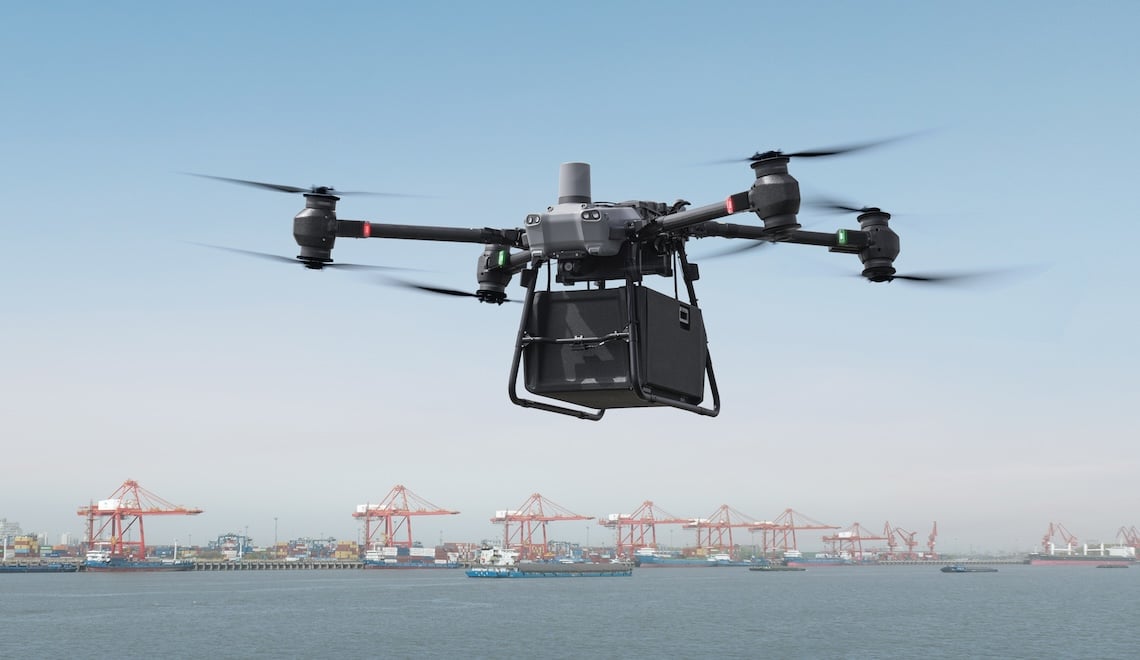
3. Monitoring
Warehouses are prime locations for theft. A thermal drone like the Mavic 3T can provide a security team with visual data of any unusual or suspicious activity during nighttime patrols.
How can warehouse drones help with inventory and logistics?
Managing inventory can be a time-consuming task, which is why many companies only perform warehouse inventory counts occasionally. Due to the amount of labor and time required for inventory management, companies try to minimize the number of times they have to do this.
Drones, in many ways, are superior to humans for inventory management. Humans make errors, and counting inventory is a tedious and slow process prone to mistakes. Taking inventory in high places requires standing from a height, which makes it potentially dangerous. Drones don’t have these issues. They’re also less expensive and less capable of making mistakes. This makes warehouse drones invaluable, decreasing labor costs and saving overhead.
What issues are warehouse managers facing and how can drones help?
There is a constant growing demand for freight delivery as online sales overtake brick-and-mortar stores, making warehousing difficult. Consequently, the pace at which warehouses need to function has become unsustainable.
Warehouse management simply isn’t as efficient as it needs to be to keep up with the astronomical demand being placed on online retailers. Hiring more employees is costly, as is maintaining more warehouses. With more items on the shelves comes more potential errors in inventory management. And since the focus is on getting things off the racks fast, the logistics of warehousing have become extremely difficult to manage.
Drones can help to alleviate all of these problems. If the trend toward these UAV’s continues, more and more businesses will start using them until they become a common — even necessary — technology.
The Future of Warehouse Drones
While there are a few kinks to work out, and there’s still some hesitance to adopt them completely, warehouse drones are poised to be the future of warehouse management. Able to perform various of tasks competently and save people from dangerous and time-consuming work, the potential for drones to be more commonplace in warehouse management is clear.
Contact us at DJI to see what we can do for your warehousing needs.
